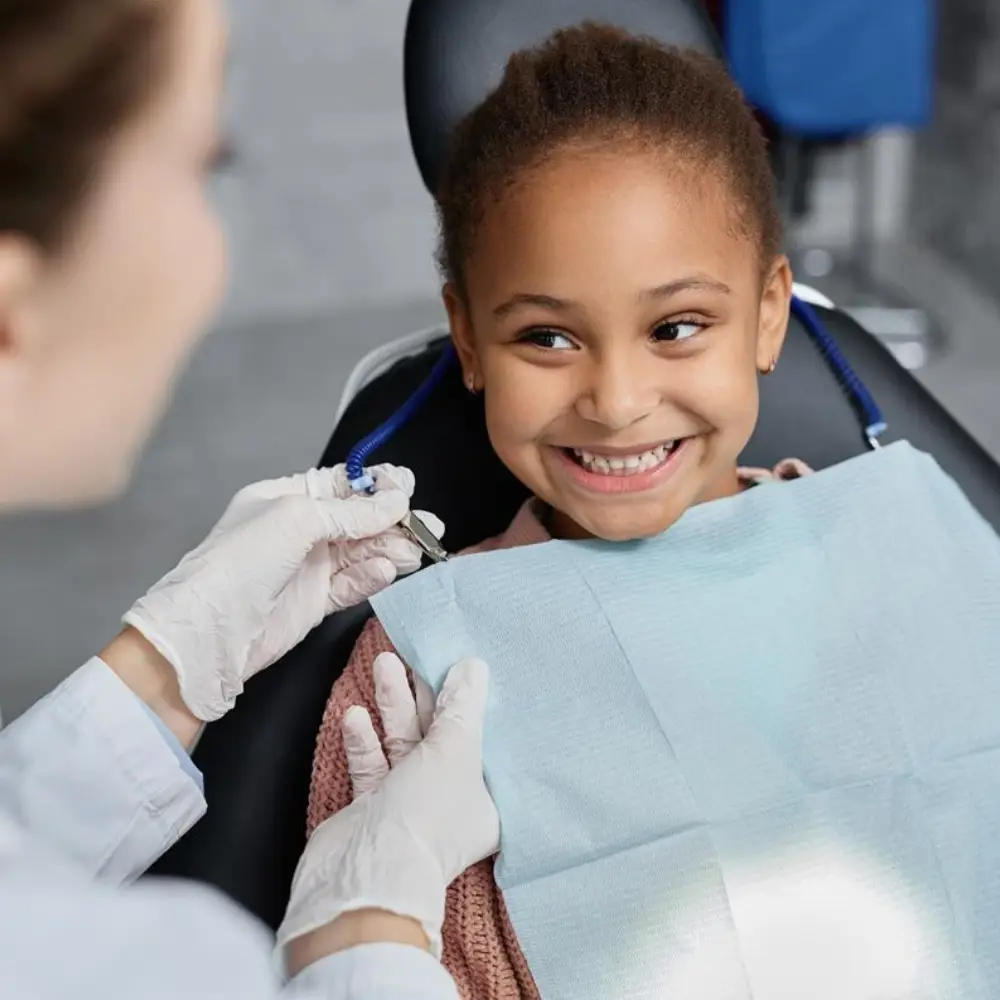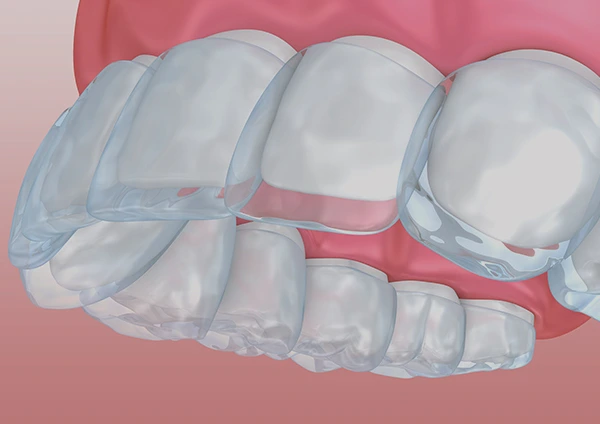Invisalign offers a discreet, individualized approach for individuals addressing overbite concerns, providing an alternative to conventional metal braces. Overbites impact not only facial aesthetics but also long-term oral health. These custom-made clear aligners have gained considerable popularity, as they enable patients to correct bite issues without the noticeable appearance associated with traditional orthodontic treatments.
Invisalign for Overbites: What You Need to Know
Individuals experiencing an overbite—where the upper front teeth extend significantly over the lower teeth—often seek effective and minimally invasive treatment options. Recent advancements in clear aligner technology, such as Invisalign, have made these systems increasingly viable for addressing overbites. The condition itself can contribute to issues including jaw discomfort, uneven dental wear, and, in some cases, speech difficulties.
Invisalign operates by employing a sequence of custom-designed, transparent aligners that gradually reposition the teeth into optimal alignment. For many individuals with mild to moderate overbites, Invisalign offers a successful alternative to traditional braces. Nonetheless, the specific nature and severity of each case must be assessed to determine suitability for this treatment method. Therefore, a comprehensive evaluation by a qualified Invisalign provider remains essential. Having a clear understanding of the treatment process can empower patients to make informed decisions regarding their orthodontic care.
What Is an Overbite and Why It Matters
An overbite, defined as the excessive vertical overlap of the upper front teeth over the lower front teeth, is a common dental condition. While a minor degree of overlap is considered physiologically normal, pronounced overbites may precipitate a range of clinical complications.
These potential issues include temporomandibular joint discomfort, masticatory inefficiency, and articulation difficulties. Additionally, patients may experience accelerated occlusal wear, heightened susceptibility to dental fractures, and soft tissue concerns such as gingival irritation and recession. Timely identification and intervention are critical, as early management of overbite can mitigate these risks and support optimal long-term oral health outcomes.
Types of Overbites Invisalign Can Treat
Invisalign effectively treats many types of overbites, including:
- Dental overbites: Caused by misaligned teeth rather than jaw positioning.
- Mild to moderate skeletal overbites: Where the jaw positioning is slightly off but still responsive to dental movement.
- Deep bites: When the top teeth excessively cover the bottom teeth.
Each case is unique, and Invisalign providers customize treatment based on the specific type and severity of the overbite.
When Invisalign May Not Be Enough Alone
In certain situations, Invisalign may not provide a complete solution on its own. Severe skeletal overbites, for example, may require a combination of orthodontic treatment and jaw surgery for optimal correction. During your consultation, your Invisalign provider will evaluate whether clear aligners alone can address your needs or if a multi-faceted approach is necessary.
How Invisalign Corrects Overbites Step-by-Step
Correcting an overbite with Invisalign is far from a simple matter of moving teeth, it’s a methodical process, grounded in digital planning and the use of customized aligners. These aligners are designed with advanced technology, enabling practitioners to address a wide range of overbite cases with both precision and relative comfort. The treatment unfolds in clearly defined stages, beginning with an initial consultation and continuing through a series of custom-fitted aligners, each step carefully orchestrated to enhance both dental function and appearance.
A thorough understanding of this process allows patients to approach their Invisalign journey with informed expectations, from the first appointment to the completion of treatment. Here is a step-by-step overview of how Invisalign is utilized to correct overbites.
Customized Aligner Movement Planning
Invisalign treatment begins with detailed 3D scans of your teeth and bite. Advanced software creates a digital model of your mouth, allowing your provider to plan the precise movements needed to shift your teeth gradually into the correct position. These aligners are designed to apply gentle, consistent pressure that moves both individual teeth and, when necessary, guides jaw positioning to address bite alignment.
Role of Attachments and Elastics in Bite Correction
In cases where the overbite is more pronounced or complex, Invisalign employs additional features to improve treatment outcomes. These include small, tooth-colored attachments essentially subtle bumps temporarily bonded to the teeth which allow the aligners to exert more targeted forces on specific teeth that require precise movement. Additionally, elastics (small rubber bands) may be used, connecting designated points on the aligners to help guide the jaw into a more optimal position. By utilizing these advanced components, Invisalign increases both the predictability and efficiency of treatment, enabling the successful correction of even challenging overbite cases with a high degree of accuracy.
Monitoring Overbite Progress Over Time
Regular appointments with your Invisalign provider are, frankly, non-negotiable if you want your treatment to actually go as planned. These visits allow your dentist to keep a close eye on how your teeth are moving, make sure your aligners are fitting correctly, and check if your jaw is cooperating with the overall plan. Missing a check-in could mean small issues get missed and snowball into bigger problems, possibly dragging out your treatment longer than necessary. Staying on top of these evaluations gives your provider the chance to make smart adjustments early, which not only helps keep things efficient but also increases the chances you’ll end up with the results you want.
In short, routine monitoring is absolutely key to the long-term success of your bite correction.
Invisalign Cost for Overbite Treatment
The cost associated with Invisalign for overbite correction is variable, hinging on factors such as the complexity of the malocclusion, the anticipated duration of treatment, and the experience level of the dental provider. Typically, patients may encounter expenses ranging from approximately $3,000 to $8,000 for comprehensive Invisalign therapy. Cases classified as mild or moderate generally incur costs at the lower end of this spectrum, whereas more severe presentations especially those necessitating additional attachments, elastics, or prolonged intervention may drive the price upward.
Many dental practices facilitate patient access to Invisalign by providing flexible financing arrangements, thereby allowing costs to be distributed over an extended period. Furthermore, select dental insurance policies may offer partial reimbursement for orthodontic services, including Invisalign treatment for overbites. During the initial consultation, practitioners customarily present a meticulous cost analysis, encompassing insurance contributions, financing options, and any applicable discounts or promotional offers.
Ultimately, electing to pursue Invisalign for correction of an overbite serves not only to enhance dental aesthetics but also to mitigate the risk of long-term oral health complications associated with malocclusion, thereby representing a prudent investment in one’s overall dental well-being.
How Much Does Invisalign Cost for Bite Issues?
The cost of Invisalign for correcting an overbite generally falls within the range of $3,500 to $7,500. This variation is influenced by multiple factors, including the severity of the overbite, the anticipated duration of treatment, the necessity for additional components such as attachments or elastics, and the experience and geographic location of the provider. Typically, individuals with milder cases requiring minimal adjustment will incur costs at the lower end of the spectrum, while those with more complex conditions and extended treatment timelines may experience higher expenses.
Insurance Coverage and Financing Options
When evaluating the financial aspects of Invisalign treatment, insurance coverage can be a significant factor. For cases where dental correction is medically indicated, such as bite alignment, many insurance plans will cover a portion of the expense, typically offering between $1,000 and $3,000 depending on the specific policy.
For remaining costs not covered by insurance, patients have several options to manage payment. Most providers offer interest-free installment plans, and third-party financing solutions are commonly available. Paying the full amount upfront may also yield a discount, and individuals with Health Savings Accounts (HSAs) or Flexible Spending Accounts (FSAs) can often apply these funds toward Invisalign expenses.
Taken together, these options can substantially mitigate the financial burden of treatment, making Invisalign a more accessible solution for those seeking orthodontic care.
Comparing the Cost of Braces vs. Invisalign for Overbites
Both braces and Invisalign typically cost a similar amount for overbite correction. However, Invisalign’s clear design, removability, and comfort often make it a preferred choice despite comparable pricing. Factors like treatment duration, complexity, and insurance coverage will influence your personal cost comparison. Your provider can offer a detailed estimate after your evaluation.
Invisalign vs. Braces for Overbite Correction
When considering methods to correct an overbite, two primary orthodontic options emerge: Invisalign and traditional braces. Both approaches are effective, yet they employ distinct techniques and present unique benefits and limitations. Invisalign utilizes clear, removable aligners that offer a discreet appearance, whereas traditional braces depend on fixed brackets and wires to reposition teeth. The suitability of each treatment typically hinges on the severity of the overbite, the patient’s lifestyle, and individual preferences. A thorough understanding of these variables can assist in selecting the most appropriate corrective method.
Pros and Cons of Each Method
Both Invisalign and conventional metal braces are effective at addressing overbites, though their mechanisms and patient experiences differ considerably. Selecting the most suitable option depends on a variety of factors, including visibility, comfort, adherence to treatment protocols, and the complexity of the dental issue. Additionally, lifestyle considerations such as personal aesthetics and the ability to maintain oral hygiene may influence which approach is preferable for an individual patient. Ultimately, there is no universal solution; careful evaluation of these elements is necessary to determine the optimal method for overbite correction.
| Treatment | Pros | Cons |
|---|---|---|
| Invisalign | Nearly invisible, removable, easier hygiene, fewer food restrictions | Requires patient discipline, may not suit severe cases |
| Braces | Suitable for all severities, highly controlled movements | Visible brackets, dietary restrictions, more discomfort |
Speed, Comfort, and Visibility Compared
Invisalign often appeals to adults and teens seeking a discreet treatment option. While both methods offer effective results, Invisalign’s smooth aligners generally cause less irritation to cheeks and gums. Treatment duration varies but is often comparable between both methods for mild to moderate overbite cases. Severe skeletal overbites may respond faster to braces in some instances.
Best Invisalign Providers for Overbite Near Me
Selecting an appropriate Invisalign provider is genuinely crucial for effectively addressing an overbite. Not every dental professional possesses the same depth of experience with complex bite corrections, some excel in this area, while others may not. It is, therefore, advisable to seek out a certified provider who specializes in overbite cases and has demonstrable expertise with Invisalign. Local specialists in this field tend to utilize advanced technology, offer tailored treatment plans, and provide continuous oversight, all of which contribute to safer and more predictable outcomes. Access to a knowledgeable expert within your community can significantly ease the treatment process and help ensure your bite is properly aligned.
What to Look for in an Invisalign Doctor Site
Selecting an Invisalign provider isn’t just about credentials on paper, it requires a nuanced approach. Prioritize clinicians with demonstrated expertise in resolving bite alignment issues; this practical experience is often far more telling than generic qualifications. Technological capability matters, too. Seek out practices equipped with state-of-the-art imaging and diagnostic tools, think advanced 3D scanners, not outdated impression trays. The right technology can make your treatment both more precise and more comfortable.
Don’t underestimate the value of authentic patient feedback. Examine reviews and scrutinize before-and-after photographs, ideally of cases similar to your own. Reliable outcomes should be transparent and verifiable, not just marketing fluff. Financial transparency is another critical factor. A reputable provider will be upfront about pricing and will offer clear, accessible information regarding payment plans and financing. Hidden costs or vague estimates should be a red flag. Finally, effective communication and thorough patient education are indispensable. Your provider should engage with you openly, ensuring you understand each phase of the Invisalign process and feel empowered to ask questions.
The most successful Invisalign experiences stem from selecting a provider who combines technical expertise, advanced resources, clear communication, and a commitment to ethical patient care.
Questions to Ask During Your Consultation
Prepare to ask your provider:
- How many overbite cases have you treated with Invisalign?
- What type of attachments or elastics might I need?
- What is my estimated treatment time?
- Will my insurance cover part of the cost?
- What happens if my teeth don’t move as planned?
These questions give you a clearer understanding of what to expect and build confidence in your provider’s expertise.
Why Choose G&P Dental for Invisalign Treatment
At G&P Dental, our team offers personalized Invisalign care backed by advanced technology and extensive experience with bite correction. We prioritize clear communication, patient comfort, and precision at every stage of treatment. From your first consultation through your final aligner, we’re committed to delivering exceptional results while making the process as smooth and stress-free as possible.
Frequently Asked Questions (FAQs)
1. What types of overbites can Invisalign fix?
Invisalign can effectively correct many types of overbites, including dental overbites, deep bites, and mild to moderate skeletal overbites. The clear aligners gradually shift teeth into proper alignment, improving both function and appearance. However, for more severe skeletal overbites, where jaw positioning is significantly involved, a combination of orthodontic treatment and jaw surgery may be recommended. During your consultation, your provider will conduct a thorough evaluation, including imaging and bite analysis, to determine if Invisalign is the right solution for your specific case. This personalized assessment ensures you receive the most effective and safest treatment plan.
2. Is Invisalign as effective as braces for overbite correction?
In many mild to moderate overbite cases, Invisalign delivers results similar to traditional braces, using advanced aligner technology to reposition teeth efficiently. For more severe cases that involve substantial jaw misalignment, traditional braces may still offer better control and precision. These situations sometimes require additional appliances or surgical intervention to fully correct the bite. After a comprehensive evaluation, your dentist or orthodontist will recommend the most suitable treatment option tailored to your specific needs. Their expert guidance ensures you achieve the safest and most effective outcome.
3. How long does Invisalign take for overbites?
Treatment with Invisalign for overbites usually takes between 12 to 24 months, depending on how severe the overbite is and how complex the tooth movements are. Patient compliancew earing the aligners as directed for 20 to 22 hours daily plays a critical role in achieving the desired results on schedule. Regular checkups allow your provider to monitor progress, make necessary adjustments, and ensure that your bite is shifting correctly. Staying consistent with appointments and aligner wear helps keep your treatment on track for optimal results.
4. Can adults use Invisalign to fix an overbite?
Absolutely. Invisalign is a highly effective solution for adults who want to correct an overbite without the visibility of traditional braces. The clear aligners are comfortable, removable, and easy to fit into daily routines, allowing you to eat, brush, and attend social events with confidence. Many adults appreciate the discreet appearance and convenience, especially when balancing work and personal commitments. With proper compliance and regular check-ins, Invisalign can successfully improve bite alignment while maintaining your lifestyle and comfort.
5. Will I need rubber bands or other tools with Invisalign?
In certain overbite cases, your Invisalign treatment may include the use of rubber bands (elastics) and small tooth-colored attachments. The attachments help the aligners apply more precise pressure to specific teeth, while the elastics assist in guiding jaw alignment for improved bite correction. These tools work together with your aligners to address complex movements that aligners alone may not fully achieve. When used as directed, they can significantly enhance the effectiveness of your treatment and help you reach your desired results more efficiently.
If your overbite is affecting your confidence or oral health, Invisalign offers a modern, personalized solution that fits your lifestyle. Our expert team at G&P Dental is here to evaluate your bite, design a custom treatment plan, and guide you through every step of the process. Don’t wait to start your journey toward a healthier, more confident smile. Schedule your Invisalign consultation today to see if clear aligners are the right fit for your overbite correction.


